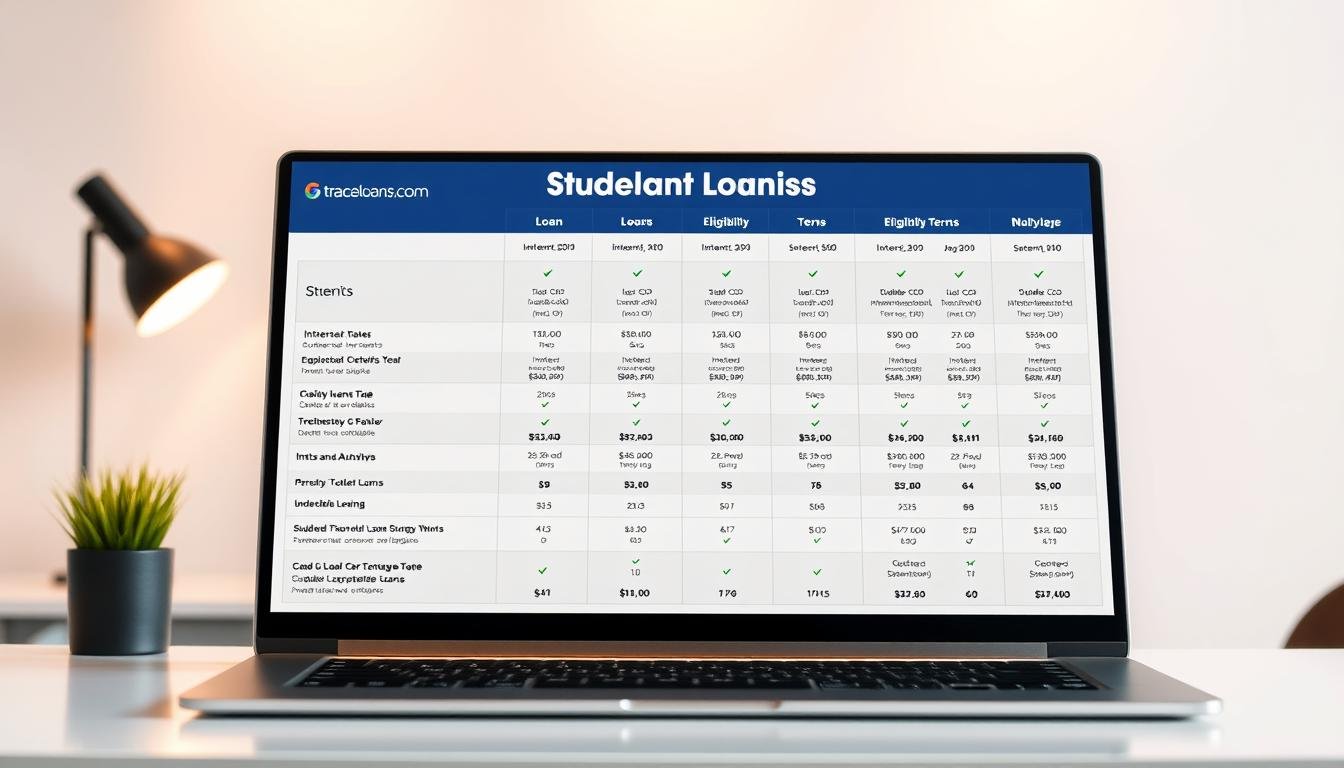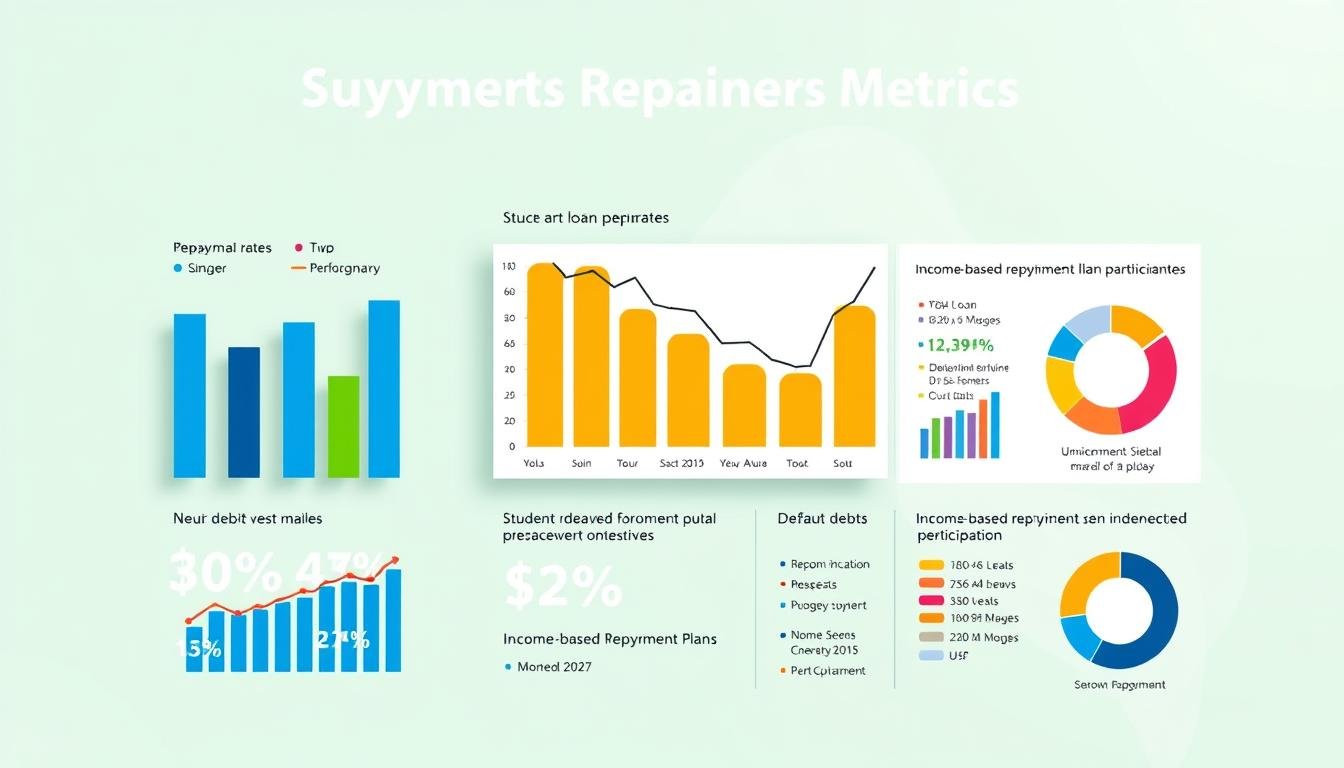Private mortgage insurance costs $30–$70 monthly for every $100,000 borrowed. This adds up to over $10,000 in five years. Buyers with less than 20% down often feel stuck with these fees. But, is there a way to avoid this cost and get your dream home?
Fannie Mae now offers flexible options for borrowers looking to avoid PMI. Programs like piggyback loans can split your mortgage into two parts. This might save you thousands. Some lenders might even cover the insurance cost for a small rate increase. It’s worth considering.
To avoid PMI on a conventional home loan without 20% down, use strategies like 80-10-10 piggyback loans, lender-paid PMI, physician/VA loans, or accelerated equity through extra payments and renovations to reach 20% equity faster.
VA loans don’t have PMI, but conventional loans need other strategies. With rates between 0.30% and 1.15% of your loan balance annually, finding ways to avoid PMI is crucial. Let’s explore ways to eliminate private mortgage insurance without waiting years to save more. Here, we discuss in detail the best ways to how to avoid PMI on a conventional home loan without a 20% down payment.
Key Notes;
- PMI costs average $1,200–$2,800 annually per $200,000 borrowed
- Piggyback loans combine an 80% primary mortgage with a 10%–15% second loan
- Lender-paid PMI options lock in slightly higher interest rates instead of monthly fees
- Fannie Mae’s HomeReady program accepts 3% down payments with reduced insurance costs
- Rapid home equity growth through renovations can cancel PMI faster than scheduled
Understanding PMI Costs and Conventional Loan Requirements
Homebuyers face a big choice when getting conventional loans. They can pay upfront costs or deal with long-term insurance fees. Private Mortgage Insurance (PMI) helps lenders but adds costs for borrowers with less than 20% down. We’ll look at how it works and ways to lessen its impact.
What Is Private Mortgage Insurance?
PMI is needed for conventional loans with less than 20% down. It costs 0.5% to 1.5% of the loan yearly. For a $300,000 mortgage with 10% down, monthly payments are $103 ($1,236 yearly) until 20% equity is reached.
Why PMI Adds Significant Long-Term Costs
PMI payments don’t help build equity or benefit borrowers. Over five years, our $300k example pays $6,180 in insurance fees. This is more than FHA loans.
| Feature | Conventional Loan | FHA Loan |
|---|---|---|
| Minimum Down Payment | 3% | 3.5% |
| Mortgage Insurance | Cancelable | 11-year minimum |
| 2025 LTV Threshold | 78% auto-removal | N/A |
New 2025 rules say PMI stops at 22% equity. But you can ask for it to stop at 20% with the right proof.
Conventional Loan Down Payment Rules
While 3% down payments are tempting, they mean PMI. Here are important points:
- 5% down: Lower PMI rates than 3% down loans
- 10% down: Faster equity buildup through payments
- 15% down: Some lenders offer lower PMI rates
Smart buyers make extra payments and watch home value grow. This helps reach 20% equity faster, allowing for pmi removal tips early.
How to Avoid PMI on a Conventional Home Loan
Smart homeowners find ways to skip private mortgage insurance. They build equity faster. Let’s look at four methods lenders offer, with real costs.
The 20% Down Payment Gold Standard
Putting down 20% is the easiest way to avoid PMI. It cuts out monthly fees and lowers your loan-to-value ratio right away. But, Bank of America’s Affordable Loan Solution lets you put down just 3% on conventional loans. It offers other PMI solutions too.
80-10-10 Piggyback Loan Strategy
This method has three parts:
- 80% first mortgage
- 10% second mortgage (home equity loan)
- 10% down payment
Buyers in Washington state saved $85 a month with this plan. Our study shows:
| Option | Upfront Cost | Monthly Payment | Total 5-Year Cost |
|---|---|---|---|
| Traditional PMI | $2,100 | $147 | $10,920 |
| Piggyback Loan | $3,800 | $89 | $9,140 |
| Lender-Paid PMI | $4,500 | $0 | $8,100 |
Lender-Paid PMI Options
Some lenders, like Movement Mortgage, pay for PMI. This means slightly higher interest rates. It’s best for those planning to refinance in 5-7 years. Key detail: You need a 660 credit score for most programs.
Physician Loans and Specialty Programs
Medical professionals can get special loans from Caliber Home Loans. These loans have:
- 5% down payments on jumbo loans
- No PMI requirements
- Flexible debt-to-income ratios
Remember, you can cancel mortgage insurance when you reach 20% equity. Use these strategies and pay more each month to get rid of PMI sooner.
How to Avoid PMI in 5 Steps
(No 20% Down? No Problem.)
Step 1: Pick Your Escape Route
“Which path fits your wallet and timeline?”
- 🚪 Door A: Piggyback Loan (80-10-10) – “Like Mia & Carlos in Seattle, split your loan to dodge PMI.”
- 🚪 Door B: Lender-Paid PMI – “Pay slightly higher rates upfront (the Nguyen family saved $1,320 this way).”
- 🚪 Door C: Specialty Programs – *”Doctors/VA folks: 0%–5% down, no PMI (TD Bank’s physician loans).”*
Step 2: Lock in Your Weapon
“Arm yourself with lender deals.”
- 📋 For Piggyback: Get pre-approved for both mortgages (e.g., 6% primary + 8% HELOC).
- 📋 For LPMI: Negotiate terms – “Movement Mortgage offers 0.25% rate bump for no PMI.”
- 📋 For VA/Physician Loans: Grab your eligibility proof (medical license/DD214).
Step 3: Attack Your Principal
“Chop away at that loan balance.”
- 🔨 Biweekly Payments: “Sarah in Austin cut her PMI timeline by 4 years.”
- 🔨 Throw Windfalls at Debt: “Tax refund? Birthday cash? Redirect it.”
- 🔨 Renovate Smart: “A $15k kitchen reno boosted Mark’s equity by 12% in 6 months.”
Step 4: Spy on Your Equity
“Track your progress like a hawk.”
- 📱 Apps: Use Bankrate’s PMI calculator or your lender’s dashboard.
- 📅 Calendar Alerts: Check home values every 6 months (Zillow/Redfin estimates).
- 💡 Trigger Point: “At 18% equity, start prepping your PMI cancellation request.”
Step 5: Declare Victory
“Slay the PMI dragon for good.”
- 📜 Automatic Removal: “Wait until you hit 22% equity – your lender must cancel it.”
- 📜 Early Cancellation: *”At 20%, send a certified letter + $600 appraisal. Pro tip: Time it after renovations!”*
Real Buyer Case Studies: PMI Avoidance in Action
Planning your mortgage can save you money. These stories show how people bought homes without private mortgage insurance. They used smart financing and talked their way to savings.
First-Time Buyer Using 80-10-10 Structure
Mia and Carlos, tech workers in Seattle, bought a $585,000 condo. They used a special loan setup:
- Primary mortgage: $468,000 (80% LTV)
- Second mortgage: $58,500 (10% LTV)
- Down payment: $58,500 (10%)
“Our plan saved us $212/month. That’s $12,720 over five years. It stayed in our pockets.”
They used NACA’s no-PMI program for first-time buyers. They mixed it with regular loans. Here’s how their payments worked out:
| Component | 80-10-10 Strategy | FHA Loan with PMI |
|---|---|---|
| Principal & Interest | $3,142 | $3,142 |
| Second Mortgage | $438 | N/A |
| Mortgage Insurance | $0 | $325 |
| Total Payment | $3,580 | $3,467 |
Family Negotiating Lender-Paid PMI
The Nguyen family in Phoenix bought a $310,000 home. They paid 12% down through smart rate talks:
- Standard offer: 6.25% rate + $148/month PMI
- Negotiated deal: 6.75% rate with lender-paid PMI
Here’s how their payments compare over five years:
| Option | Monthly Payment | 5-Year Cost |
|---|---|---|
| Standard + PMI | $2,189 | $131,340 |
| Lender-Paid PMI | $2,211 | $132,660 |
| Net Savings | -$22/month | +$1,320 savings |
“The higher rate saved us money after taxes. We used PMI savings to pay off the loan faster.”
These stories show how to ditch PMI on a home loan. You can avoid insurance by using smart loans or talking to lenders.
PMI Cancellation Process: Fannie Mae/Freddie Mac Guidelines
Homeowners can get rid of PMI costs in two ways. Fannie Mae and Freddie Mac have rules for when PMI can stop. Let’s look at how these rules work.
Automatic Removal at 22% Equity
Your loan servicer must cancel PMI when you have 22% equity. This is based on the home’s original value. For example, if your home is worth $400,000, you owe less than $312,000.
The countdown starts when you first get your loan. You don’t need to do anything.
Three things decide if PMI gets canceled automatically:
- You pay your mortgage on time
- No second liens on the property
- The home’s value hasn’t dropped a lot
Request-Based Removal at 20% Equity
You can ask to stop PMI earlier at 20% equity. You need to write a formal request. You also need a $500-$700 appraisal to show your home’s value.
For a $400k home, you need to owe less than $320,000. You also need to show that the home’s value is stable.
New rules in 2025 make things easier:
- You can ask online through your lender’s portal
- Appraisal approvals come faster (72 hours)
- There’s a quick way to check if you have enough equity
Check with your lender to see what they need. Some might want two years of payments before they can cancel PMI early. Making extra payments and improving your home can help you reach 20% equity faster.
PMI Strategies by Credit Score & Down Payment
(Skip the Insurance, Keep the Savings)
| Strategy | Credit Score | Min. Down Payment | PMI Status | Best For | Key Risks |
| 80-10-10 Piggyback Loan | 680–720 | 10% | Avoids PMI | Long-term owners (<10 yrs) | Adjustable 2nd mortgage rates 🌊 |
| Example: Seattle couple saved $212/mo | |||||
| Lender-Paid PMI (LPMI) | 660–700 | 3%–5% | No monthly PMI | Short-term owners (5–7 yrs) | Higher interest rates (0.25%–0.75%📈) |
| Example: Nguyen family’s 6.75% rate deal | |||||
| Physician Loans | 700+ | 0%–5% | No PMI | Doctors/dentists 🩺 | Limited lender options 🏥 |
| Example: Caliber’s 5% down jumbo loans | |||||
| VA Loans | 620+ | 0% | No PMI | Veterans/active military 🎖️ | Upfront funding fee (1.25%–3.3%💵) |
| Example: 0downon0downon400k homes | |||||
| Accelerated Equity | Any | 3%–10% | Cancel PMI early | Disciplined savers 💪 | Requires extra $500+/mo payments 💸 |
| Example: Biweekly cuts 4.5 yrs off PMI |
Pro Tips:
- Credit Score <660? Focus on FHA loans or saving for a larger down payment.
- Down Payment <5%? Lender-paid PMI or physician loans are your best bets.
- Military? VA loans crush PMI – use Veterans United’s eligibility checker.
Cost Analysis: PMI vs Alternative Financing Options
Smart homeowners know every dollar counts in mortgage planning. Let’s break down the math behind PMI costs and alternative strategies. This will help you make informed financial decisions.
30-Year PMI Costs vs Piggyback Interest
Consider a $237,000 loan with $1,236 annual PMI. Over 10 years, this adds $12,360 to your housing costs – before considering interest. Now, let’s look at an 80-10-10 piggyback loan:
| Strategy | Upfront Cost | Annual Cost | Total 10-Year Cost |
|---|---|---|---|
| Traditional PMI | $0 | $1,236 | $12,360 |
| Piggyback Loan | $2,500 (fees) | $1,422 (6% interest) | $10,500 |
The piggyback option saves $1,860 in this scenario. But, results can change based on:
- Second mortgage interest rates
- Tax deduction eligibility
- Home value appreciation
Break-Even Points for Different Strategies
Our analysis shows a 145-month (12.1-year) breakeven point between PMI and piggyback loans. In slow-growth markets (2% annual appreciation):
| Strategy | 5-Year Cost | 10-Year Cost | Equity at 10 Years |
|---|---|---|---|
| PMI | $6,180 | $12,360 | 29% |
| Piggyback | $9,610 | $16,500 | 33% |
In fast-growth markets (5% appreciation), PMI becomes cost-effective after 7 years. Three key factors impact your ideal strategy:
- Planned ownership duration
- Local housing market trends
- Available cash reserves
Pro tip: Use online mortgage calculators to compare your specific numbers. Many lenders offer free tools that factor in current rates and tax implications.
Risk Management in PMI Avoidance Approaches

Risk management is key to avoiding PMI on a mortgage. It helps save thousands each year. But, it’s important to know the risks, like in unstable housing markets. Let’s look at important safety steps for avoiding PMI.
Second Mortgage Safety Checks
Piggyback loans, like 80-10-10, have risks if home values don’t grow. Look out for these warning signs:
- Adjustable-rate HELOCs with rates over 4%
- Loan payments taking more than 38% of your income
- Local housing markets with 5+ months of supply
Here’s a risk check for common PMI avoidance plans:
| Strategy | Best Credit Range | Market Stability Needed | Avg. 5-Year Cost |
|---|---|---|---|
| Lender-Paid PMI | 720-740 | Moderate | $8,400 |
| 80-10-10 Loan | 680-710 | High | $6,200 |
| Single Premium PMI | 700+ | Low | $9,100 |
Refinancing Reality Checks
Refinancing to drop PMI might seem easy, but 22% of homeowners get it wrong. Important things to think about are:
- Conventional refinances cost about $5,000 in closing costs
- Need to live in the home for 12-24 months
- Could lose the original loan terms
“Refinancing early can make debt last longer than saving on PMI.”
– Federal Reserve 2023 Mortgage Analysis Report
To really protect yourself, always think about the worst-case scenario. Use tools like:
- 5-year ARM rate forecasts
- Local price-to-rent ratios
- How much money you need in an emergency fund
Piggyback Loans vs Lender-Paid PMI: Key Differences
Homebuyers looking to cancel mortgage insurance have two main choices. They can pick between piggyback loans and lender-paid PMI. This choice affects how much money they have upfront and their total loan costs later on. Let’s look at how these options compare in costs and long-term savings.
Upfront Costs Comparison
Piggyback loans need two closings: one for the main mortgage and another for the second loan. Here’s what we found:
| Expense Type | 80-10-10 Piggyback | Lender-Paid PMI |
|---|---|---|
| Down Payment | 10% ($40k) | 3% ($12k) |
| Closing Costs | $8,400 | $6,800 |
| Initial Monthly Payment | $1,845 | $2,008 |
LPMI might seem cheaper at first, but its higher interest rate means more money over time. Piggyback loans keep the first mortgage rate low but require paying the second loan right away.
Long-Term Financial Implications
Several things decide which choice saves more money:
- Homeownership duration: LPMI is better for short stays
- Tax deductions: Piggyback loan interest might be tax-deductible
- Equity growth: Faster paying off the loan means quicker PMI cancellation
For a $400,000 home, here’s what 2025 rates suggest:
- 15-year LPMI total cost: $368,112
- 15-year piggyback total cost: $334,900
Those planning to stay more than 10 years save about $33,212 with piggyback loans. But, LPMI is better for short-term owners. They get lower payments and can sell before the rate premium adds up.
Negotiation Strategies for Better Mortgage Terms

Mortgage terms can seem fixed, but you might have more power than you think. If you have a strong financial situation, you can change PMI rules. By negotiating, you can get better deals that save you money over time.
Leverage Credit Scores for PMI Concessions
Credit scores affect how much you pay for PMI. A high score can lead to:
- Lower PMI rates
- No extra fees
- Quicker access to equity
When you talk to lenders, say this: “With my 785 credit score and steady job, can we talk about lower PMI rates or other options?” If your score is between 680-759, ask to see how PMI costs change with different scores.
| Credit Tier | PMI Rate Range | Negotiation Power |
|---|---|---|
| 760+ | 0.20%-0.50% | High |
| 720-759 | 0.50%-0.85% | Moderate |
| 680-719 | 0.85%-1.25% | Limited |
Shop Multiple Lender Offers Strategically
Make lenders compete for your business with these steps:
- Get loan estimates from 3+ lenders
- Point out the best PMI deals
- Challenge others to match those deals
In Seattle, a buyer saved $9,200 by showing Bank of America’s offer to CitiMortgage. Both lenders updated their offers in just 48 hours.
“Lenders want your business more than they want maximum PMI profits. Your job is to make them prove it.”
– Mortgage Industry Insider
Always ask for rate lock extensions during talks. This stops lenders from changing terms after you agree.
Accelerating Equity to Eliminate PMI Faster
Building home equity faster isn’t just waiting for the market to grow. You can speed up your PMI timeline with smart actions. Homeowners who pay extra and make upgrades can reach 20% equity 30-50% quicker than those who wait.
Extra Payment Strategies
Biweekly mortgage payments make 13 payments a year instead of 12. This cuts 4.5 years off a 30-year loan. For a $300,000 mortgage at 6% interest:
| Payment Method | PMI Duration | Interest Saved |
|---|---|---|
| Monthly | 8.3 years | $0 |
| Biweekly | 6.1 years | $18,440 |
Here are three ways to pay off your principal faster:
- Apply 50% of tax refunds to principal
- Round up payments to nearest $100
- Use employer bonuses for lump-sum reductions
Home Improvement Value Boosters
Strategic renovations can boost your property value by 15-25%, says 2025 Remodeling Magazine. Choose upgrades with the best value:
| Project | Average Cost | Value Added | ROI |
|---|---|---|---|
| Minor Kitchen Remodel | $26,500 | $38,000 | 143% |
| Bathroom Addition | $52,000 | $67,600 | 130% |
| Landscaping | $8,200 | $12,300 | 150% |
“Fannie Mae requires formal appraisals to confirm value increases for equity recasts. Always consult lenders before starting renovations.”
Avoid spending on luxury items like pools. They usually return less than 50% of their cost. Instead, focus on curb appeal and kitchen/bath updates that match your neighborhood.
Specialty Loan Programs for Eligible Borrowers

Certain jobs and service backgrounds can help you avoid PMI. These specialty programs offer special terms for certain groups. They make getting a mortgage easier and cheaper.
Physician Loan Features
Doctors can get physician-specific mortgages that fit their needs. TD Bank’s Doctor Loan program is an example. It lets doctors:
- Get 100% financing up to $1.5 million
- Avoid PMI
- Have debt-to-income ratios up to 45%
Doctors buying a $550,000 home might get a better rate. Caliber’s 5% down jumbo loans for doctors show how specialty programs can beat regular loans.
| Program | Down Payment | Rate (30-year fixed) | PMI Status |
|---|---|---|---|
| Physician Loan | 5% | 6.75% | None |
| Conventional + PMI | 5% | 6.50% | $285/month |
VA Loans and PMI Exemptions
VA loans are the best PMI-free option for military and veterans. In 2025, there are big updates:
- Entitlement limits raised to $766,550 in high-cost areas
- Funding fee cut to 1.25% for first-time use
- $0 down payment kept
VA loans don’t need PMI, but there’s a funding fee. For a $400,000 home, this fee is $5,000. This is less than the $9,600 in PMI for a conventional loan over 4 years.
“VA loans are the cheapest way to buy a home for eligible veterans. They save more than $50,000 over conventional loans.”
To get the most from these specialty programs:
- Check if you qualify through services or VA portals
- Look at different lender terms (TD Bank vs Caliber vs local credit unions)
- Figure out if upfront fees or PMI costs are better in the long run
Conclusion: Choosing Your Optimal PMI Strategy
To choose the best way to get rid of PMI on a home loan depends on a few things. These are your down payment, credit score, and how long you plan to own the home. If your credit score is high, like over 720, you might want to look at lender-paid PMI options.
For those with 10-15% down, 80-10-10 structures could be the best choice. Lenders like Wells Fargo offer these options.
Use calculators to figure out the long-term costs of getting rid of PMI. These calculators compare different plans. Rocket Mortgage has good rates for those with high credit scores.
For VA-eligible buyers, Veterans United is the best for avoiding PMI forever.
Here are some quick steps to get good terms:
1. Get free credit reports from AnnualCreditReport.com to check your score.
2. Ask lenders to compare fees and rates for you.
3. Plan to pay off your mortgage faster with extra payments or home improvements.
Remember, choose a PMI strategy that fits your money now and your future home plans. First-time buyers should look at Bank of America’s special loans. Homeowners close to 20% equity can set up automatic PMI removal.
Keep an eye on mortgage rates every quarter. Use sites like Zillow Home Loans to find the best time to refinance and avoid PMI forever.











